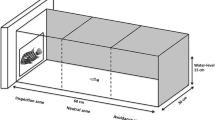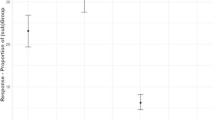Abstract
Prey species have to recognize a predator, assess its potential threat, and adjust its behavioral responses according to the magnitude of the perceived predation risk. In many studies of antipredator behavior in prey animals, simulated threats, such as human activities (movements, approaching prey), have been used as experimental threat factors, often in controlled circumstances, while prey responses to other animals in natural environments have been less investigated. This paper discusses the responses of goitered gazelles in the wild during encounters with various animals in their natural habitat to evaluate their cues used to assess the magnitude of potential threats. This study found that the goitered gazelles’ behavioral responses to perceived risk differed across the various species sharing their habitat, with kulan recognized as a minimal threat and Siberian ibex the most threatening among ungulates. Among predators, the fox caused the least fear, while a horseman with a dog was identified as the greatest threat, with a wolf falling in between. Goitered gazelles adjusted their responses depending on the traits of the species encountered, while the features and conditions in their local environment played a less significant role. During encounters with other species, the gazelles ranked them according to their potential risk level based on the animal’s appearance and behavior. The gazelles did distinguish between predators and other species and reacted to them differently: from pursuing and harassing the smallest (fox), to a panicky, running escape from their most dangerous natural predator (wolf), and especially from their most lethal, non-natural “predator” (herdsmen—mainly local poachers). Thus, this study suggested that goitered gazelles differentiate between predator species, assess their traits and intentions in each particular setting, and respond in the most advantageous way to each threat challenge.
Similar content being viewed by others
References
Altmann J (1974) Observational study of behavior: sampling methods. Behav 49:227–267
Apfelbach R, Blanchard CD, Blanchard RJ, Hayes RA, McGregor IS (2005) The effects of predator odors in mammalian prey species: a review of field and laboratory studies. Neuroscie Behav Rev 29:1123–1144
Barja I, Rosellini S (2008) Does habitat type modify group size in roe deer and red deer under predation risk by Iberian wolves? Can J Zool 86:170–176
Bekenov AB, Fadeev VA (1984) Kulan. In: Gvozdev EV, Strautman EI (eds) Mammals of Kazakhstan, Vol. 3 (4), Nauka KazSSR, Alma-Ata, pp. 189–217 (in Russian)
Blank DA (1985) Peculiarities of social and reproductive behaviour of Gazella subgutturosa in the Iliisky Valley. Zool Zhu 64:1059–1070 in Russian, English abstract
Blank DA (1990) Persian gazelle. In: Kovshar AF (ed) Rare animals of the desert regions. Nauka Press of Kazakh SSR, Alma-Ata, pp. 56–80
Blank DA (2018a) The use of tail-flagging and white rump-patch in alarm behavior of goitered gazelle. Behav Process 151: 44–53
Blank DA (2018b) Escaping behavior in goitered gazelle. Behav Process 147: 38–47
Blank DA (2018c) Alarm signals in goitered gazelle with special reference to stotting, hissing, and alarm urination-defecation. Zoology 131: 29–35
Blank DA (2018d) Vigilance, staring and escape running in antipredator behavior of goitered gazelle. Behav Process 157: 408–416
Blank DA, Yang W, Xia C, Xu W (2012) Grouping pattern of the goitered gazelle, Gazella subgutturosa (Cetartiodactyla: Bovidae) in Kazakhstan. Mamm 76:149–155
Blumstein DT (2008) Fourteen security lessons from antipredator behavior natural security: a Darwinian approach to a dangerous world, 147e158
Byers JA (1997) American pronghorn: social adaptations and the ghost of predators past. University of Chicago Press, Chicago, II, 326 pp
Caro T (2005) Antipredator defenses in birds and mammals. Chicago Press University, Chicago
Caro TM, Lombardo L, Goldizen AW, Kelly M (1995) Tail-flagging and other antipredator signals in white-tailed deer: new data and synthesis. Behav Ecol 6(4):442–450
Chamaillé-Jammes S, Malcuit H, Le Saout S, Martin JL (2014) Innate threat-sensitive foraging: black-tailed deer remain more fearful of wolf than of the less dangerous black bear even after 100 years of wolf absence. Oecologia 174(4):1151–1158
Coss RG, Ramakrishnan U (2000) Perceptual aspects of leopard recognition by wild bonnet macaque (Macaca radiana). Behaviour 137:315–335
Coleman A, Richardson D, Schechter R, Blumstein DT (2008) Does habituation to humans influence predator discrimination in Gunther’s dik-diks (Madoqua guentheri)? Biol Lett 4:250–252
Creel S, Winnie JJ, Maxwell B, Hamlin K, Creel M (2005) Elk alter habitat selection as an antipredator response to wolves. Ecol 86(12):3387–3397
Creel S, Schuette P, Christianson D (2014) Effects of predation risk on group size, vigilance, and foraging behavior in an African ungulate community. Behav Ecol 25(4):773–784
Crosmary WG, Valeix H, Fritz H, Madzikanda H, Côte SD (2012) African ungulates and their drinking problems: hunting and predation risks constrain access to water. Anim Behav 83(1):145–153
Dehn MM (1990) Vigilance for predators: detection and dilution effects. Behav Ecol Sociobiol 26(5):337–342
Estes RD, Goddard J (1967) Prey selection and hunting behaviour of the African wild dog. J Wildl Manag 31:52–70
Fadeev VA, Sludskiy AA (1983) Saiga. In: Gvozdev EV, VI Kapitonov (eds) Mammals of Kazakhstan. Nauka of Kazakh SSR, Alma-Ata, Kazakhstan, pp 54–92
Fedosenko AK and Kapitonov VI (1983) Argali. In: Mammals of Kazakhstan (Gvozdev EV and Kapitonov VI, eds), Vol 3, part 3. Nauka of Kazakh SSR, Alma-Ata, Kazakstan: 144-209 pp.
Fedosenko AK and Savinov EF (1983) The Siberian ibex. In: Mammals of Kazakhstan (Gvozdev EV and Kapitonov VI, eds). Vol. 3, Part 3. Nauka of Kazkh SSR, Alma-Ata, Kazakhstan: 92-143 pp.
Fedosenko AK, Blank DA (2001) Capra sibirica. Mamm Species 675:1–13
FitzGibbon CD (1994) The costs and benefits of predator inspection behaviour in Thomson’s gazelles. Behav Ecol Sociobiol 34:139–148
FitzGibbon CD, Lazarus J (1995) Antipredator behavior of Serengeti ungulates: individual differences and population consequences. In: Serengeti II: Dynamics, management, and conservation of an ecosystem 2, 274
Frid A, Dill L (2002) Human-caused disturbance stimuli as a form of predation risk. Conserv Ecol 6(1):11 online] URL: http://www.conecol.org/vol 6/iss1/art11
Geist V (1981) Behavior: adaptive strategies in mule deer. In: Wallmo OC (ed) Mule and black-tailed deer of North America. University of Nebraska Press, Lincoln (NE), pp 156–223
Gese EM (1998) Threat of predation: do ungulates behave aggressively towards different members of a coyote pack? Can J Zool 77:499–503
Guthrie RD (1971) A new theory of mammalian rump patch evolution. Behaviour 38:132–145
Hirth DH, McCullough DR (1977) Evolution of alarm signals in ungulate with special reference to white-tailed deer. Am Nat 111(977):31–42
Jayakody S, Sibbald AM, Gordon IJ, Lambin X (2008) Red deer Cervus elaphus vigilance behaviour differs with habitat and type of human disturbance. Wildl Biol 14(1):81–91
Kiley-Worthington M (1976) The tail movements of ungulates, canids and felids with particular reference to their causation and function as displays. Behaviour 56:69–114
Kingswood SC, Blank DA (1996) Gazella subgutturosa. Mamm Species 518: 1–10
Kuijper DPJ, Verwijmeren M, Churski M, Zbyryt A, Schmidt K, Jędrzejewska B, Smith C (2014) What cues do ungulates use to assess predation risk in dense temperate forests? PLOSOne 9(1):e84607
Kunkel KE, Pletscher DH (2000) Habitat factors affecting vulnerability of moose to predation by wolves in southeastern British Columbia. Can J Zool 78(1):150–157
Leinders JJM (1979) On the osteology function of the digits of some ruminants and their bearing on taxonomy. Z Saugetierkunde 44:305–319
Lent PC (1966) Calving and related social behavior in the barren-ground caribou. Z Tierpsychol 23(6):701–756
Liley S, Creel S (2007) What best explains vigilance in elk: characteristics of prey, predators, or the environment? Behav Ecol 19(2):245–254
Lima SL (1995) Back to the basics of anti-predatory vigilance: the group size effect. Anim Behav 49:11–20
Lima SL, Dill LM (1990) Behavioral decisions made under the risk of predation: a review and prospectus. Can J Zool 68:619–640
Lingle S, Pellis SM (2002) Fight or flight? Antipredator behavior and the escalation of coyote encounters with deer. Behav Ecol 131:154–164
MacArthur RA, Geist V, Johnston RH (1982) Cardiac and behavioral responses of mountain sheep to human disturbance. J Wildl Manag 46:351–358
Peckarsky BL, Dodson SI (1980) Do stonefly predators influence benthic distributions in streams? Ecol 61:1275–1282
Périquet S, Todd-Jones L, Valeix M, Stapelkamp B, Elliot N, Wijers M, Pays O, Fortin D, Madziknda H, Fritz H, Macdonald DW, Loveridge AJ (2012) Influence of immediate predation risk by lions on the vigilance of prey of different body size. Behav Ecol 23(5):970–976
Pierce BM, Bowyer RT, Bleich VC (2004) Habitat selection by mule deer: forage benefits or risk of predation? J Wildl Manag 68(3):533–541
Roberts G (1996) Why individual vigilance declines as group size increases. Anim Behav 51:1077–1086
Sludskiy AA (1962) Interactions of predators and prey. Proc Inst Zool 42:24–143 (in Russian)
Solomatin AO (1973) Kulan, Nauka Press, Moscow
Stankowich T, Blumstein D (2005) Fear in animals: a meta-analysis and review of risk assessment. Proc R Soc Lond B Biol Sci 272(1581):2627–2634
Stankowich T, Coss RG (2006) Effect of predator behavior and proximity on risk assessment by Columbian black-tailed deer. Behav Ecol 17:246–254
Stankowich T, Coss RG (2007) The re-emergence of felid camouflage with the decay of predator recognition in deer under relaxed selection. Proc Biol Sci 274(1607):175–182
Walther FR (1969) Flight behaviour and avoidance of predators in Thomson’s gazelle (Gazella thomsoni Guenther 1884). Behav 34(3):184–221
Welp T, Rushen J, Kramer DL, Festa-Bianchet M, de Passille AMB (2004) Vigilance as a measure of fear in dairy cattle. Appl Anim Behav Sci 87:1–13
Yahner RH (2012) Communication. In: Wildlife and conservation. Springer, New York, NY, pp 101–111
Ydenberg RC, Dill LM (1986) The economics of fleeing from predators. Advances in the Study of Behavior 16:229–249
Zhevnerov VV and Bekenov AB (1983) Goitered gazelle. In: Mammals of Kazakhstan (Gvozdev EV and Kapitonov VI, eds), Vol 3, part 3. Nauka of Kazakh SSR, Alma-Ata, Kazakhstan: 11–54 pp.
Acknowledgments
I thank the Chinese Academy of Sciences (CAS) for The Strategic Priority Research Program (XDA20020101) for granting our work and creating all conditions for writing this paper. I am very grateful to the Institute of Zoology, former Academy of Sciences of Kazakhstan, which has given me the possibility to study goitered gazelles in their natural environment for 10 years. I am grateful to Ms. Patricia Johnston for her useful suggestions and remarks and constant help in the English editing of this manuscript.
Author information
Authors and Affiliations
Corresponding author
Additional information
Communicated by: Teresa Abaigar Ancín
Publisher’s note
Springer Nature remains neutral with regard to jurisdictional claims in published maps and institutional affiliations.
Rights and permissions
About this article
Cite this article
Blank, D.A. Behavioral responses of goitered gazelles to potential threats. Mamm Res 65, 141–149 (2020). https://doi.org/10.1007/s13364-019-00457-y
Received:
Accepted:
Published:
Issue Date:
DOI: https://doi.org/10.1007/s13364-019-00457-y




